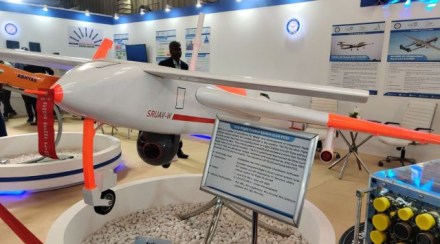The Defence Research and Development Organisation (DRDO) is set to take a significant step forward in the development of unmanned aerial vehicles (UAVs) with the upcoming first flight of the Archer-NG, an advanced Medium Altitude Long Endurance (MALE) UAV. The system is currently awaiting final clearance certification and is scheduled to take its first sortie next month.
The Archer-NG is designed to serve various roles, primarily focused on Intelligence, Surveillance, and Reconnaissance (ISR). However, its potential for combat applications also makes it versatile enough for strike missions. According to Vivek Kumar Patwey, the project director for Archer-NG, the UAV has already completed taxi trials, moving closer to its full operational capabilities. A weaponized version of the UAV is expected to be ready within three years.
Patwey described the Archer-NG as an indigenously developed UAV with a single-engine configuration known as the Single Engine Twin Boom (STEB) design. One of the key advantages of the Archer-NG is its ability to carry up to 300 kg of weapons, making it highly adaptable for both surveillance and strike operations. Additionally, the UAV can carry various payloads, including electro-optical systems, radar, and situational awareness sensors.
In terms of its operational capacity, the Archer-NG is designed to offer exceptional endurance and range. Patwey highlighted that the UAV has a mission range of 1,000 km and can fly at altitudes up to 30,000 feet, with a maximum endurance of 34 hours. However, when equipped with electro-optic payloads, it typically operates for 24 hours, ensuring continuous surveillance and reconnaissance capabilities.
“The Archer-NG is a world-class UAV with deep penetration capabilities. It is built for network-centric operations and can seamlessly integrate with manned and unmanned systems, allowing for more complex missions,” Patwey added.
The Archer-NG is currently in its final development stages. Once the certification process is complete, it will move on to its first flight trials. However, the UAV’s weaponized variant, which includes additional strike capabilities, is expected to be completed within the next three years.
While the Archer-NG is still in development, Patwey noted that the platform is comparable to other UAVs like the Hermes and Heron Mk2, though larger, more advanced systems like the MQ-9B surpass its capabilities. Nonetheless, the Archer-NG remains a significant advancement for India’s domestic UAV technology.
The Indian Air Force (IAF) has been actively involved in the development process, providing essential feedback and specifications to ensure that the Archer-NG meets operational requirements. This collaboration will play a key role in the UAV’s integration into India’s broader defense strategy.
With the launch of the Archer-NG, DRDO is making significant strides in strengthening the nation’s indigenous defense capabilities, furthering the country’s push towards self-reliance in defense technology.
